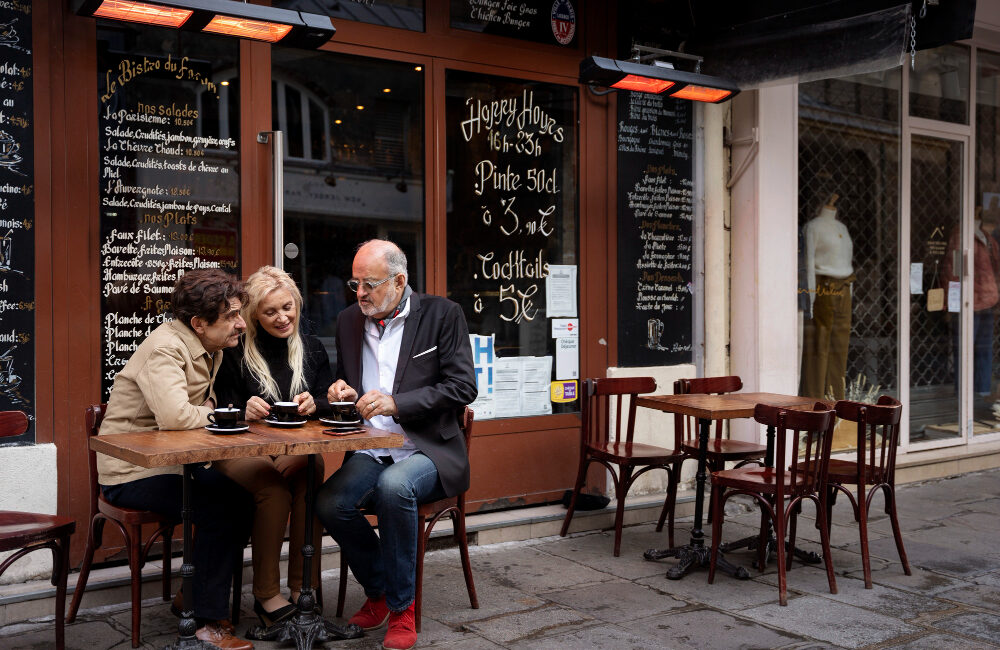The role, which the coffee shop played, has changed a lot over the years-from just a place where people drink to social centers, areas of multiple functionality, and even cultural attractions. Such a shift in the design of the coffee shop reflects broader shifts in consumer tastes and technological innovation. We look at some of the new trends and innovations taking place in the world of coffee shop design, and further look at how the modern coffee shop has influenced the way we experience the culture of coffee.
1. Minimalism Adopted
Overview: The whole world of design has been conquered by minimalism, and it is no different in the case of the coffee shop. This is a trend of simplicity, clean lines, and lack of clutter. The whole idea behind this minimalistic environment is to provide a non-fussy setting where people can simply sit and relax while having their coffee and conversation.
Key Features:
- Neutral Color Palettes: whites, grays, beiges for a serene setting.
- Streamlined Furniture: Simple, functional, minimalist-designed furniture to mesh with this trend.
- Open Spaces: Emphasis on open layouts, flooded with natural light.
Why It Works: Minimalist design leaves little room for visual clutter, further allowing a coffee shop to feel like it is a haven from the hustle and bustle of daily life.
2. The Growth of Multiuse Spaces
Overview of the Trend: The modern-day concept of a coffee shop has evolved, being increasingly preferred for offering something more than just a cup of coffee. Indeed, the multiple-use areas respond to these various needs: having a space to work, being sociable, or even receiving guests.
Key Features:
- Flexible Seating Arrangements: From co-working tables and private booths to casual seating to accommodate different activities.
- Dedicated Workspaces: access to power outlets and high-speed Wi-Fi, enabling working from home
- Event Spaces: rooms or areas that would be free, accessible, and bookable for meetings, workshops, and other social events.
Why It Works: Diverse uses make the coffee shop more integrated into daily life and appeal to a more extensive range of consumers.
3. Integration of Technology
Trend Overview: Inclusion of technology in designing coffee shops is increasing and hence is getting better regarding customer experience and operational efficiency.
Key Features:
- Digital Menus and Ordering Systems: Place orders from a tablet or screen display to queue up a process and minimize waiting time.
- Smart Coffee Machines: Automatic brewing equipment that ensures quality consistency in every cup.
- Wi-Fi and Charging Stations: High-speed internet access and plenty of charging outlets to support digital nomads and other tech-savvy customers.
Why It Works: Advances in technology improve convenience and ease-fit well within the technology-based lifestyle today’s consumer maintains.
4. Focus on Sustainability
Trend Overview: With environmental issues becoming increasingly known, sustainability has become one of the key values that guide designing in a coffee shop. Presently, a coffee shop focuses on green practices and materials to help reduce the carbon footprint.
Intended Features:
- Recycled and Upcycled Materials: Employing green materials in furniture and decoration.
- Energy-Efficient Systems: Energy-efficient lighting and heating systems are a big part.
- Zero-Waste Practices: Recycling and composting programs, along with single-use plastic reduction programs.
Why It Works: Ideas of sustainability appeal to today’s environmentally aware consumer and are one of the best means of building up a positive image of the brand for coffee shops.
5. Integration of Local Culture
Trend Overview: More and more coffee shops are incorporating local culture and aesthetic features into unique customer experiences.
Key Features:
- Local Art and Décor: Works of local artists or artisans can be showcased as a form of artwork or handicraft.
- Cultural Themes: The space should be built to reflect the cultural heritage of the area.
- Community Involvement: Events or supporting causes to help give back to the community.
Why It Works: Incorporating local culture has worked for coffee shops as a means of relating to the community; customers have a much more personalized and memorable experience.
6. Emphasize Comfort and Wellness
Comfort and wellness are becoming major concerns in the design of cafes today, as the majority of consumers would wish for a non-intensive yet healthy atmosphere.
Key Features:
- Ergonomic Furniture: Chairs and seating arrangements highly designed for comfort sitting over a prolonged period.
- Relaxation Areas: Distinctively designed areas for relaxation, such as reading nooks or quiet corners.
- Health-Conscious Menus: Food items offering healthy options, including organic and gluten-free choices.
Why It Works: An appeal to comfort and wellness speaks directly to those customers who actually go to coffee shops as a matter of unwinding and spending time with themselves.
7. Whimsical and Creative Designs
Overview of the Trend: Coffee shops today have begun adding creative, artistic designs in order to differentiate them visually from the competition.
Key Features:
- Playful Interior: Creative theme representing the personality or concept of the shop.
- Creative Décor: Unusual material and design elements to remember.
- Immersive Elements: Mural walls or installation art that include the customer in the experience.
Why It Works: One-of-a-kind designs transform the location itself into a destination, elevating customer experience and brand identity.
Conclusion
The evolution in the design of the modern coffee shop echos larger trends in both consumer behavior and technological advancement. From minimalist aesthetics to multifunctional spaces, and even sustainability, the modern coffee shop has become much more than a place one stops for a caffeine fix; it’s a dynamic environment-a multitude of needs and preferences. Keeping up with such a trend and further developments enables each coffee shop to create its unique experiences and be competitive in the market. As you continue on and find other locations, pay attention to these design aspects and appreciate how they add to the experience of drinking coffee.

